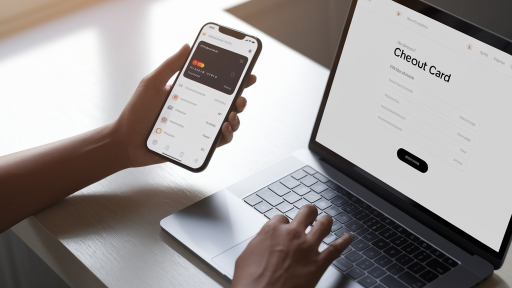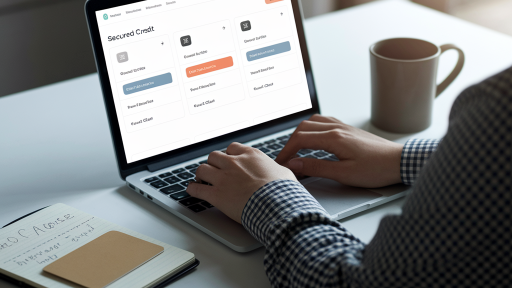In a world where almost every aspect of our lives has a digital counterpart, finance is leading the charge. From banking to investing, we manage our money through screens, and credit cards are no exception. The process of finding, applying for, and managing credit has shifted from bank branches and mail-in forms to secure websites and feature-rich mobile apps.
This shift offers incredible convenience and choice, but it also brings new questions. How do you navigate the vast sea of online offers? What makes one digital application process different from another? And most importantly, how do you keep your financial information safe? This guide will walk you through everything you need to know, empowering you to make smart, secure decisions in the digital credit landscape.
What Exactly Are Online Credit Cards?
First, let’s clarify a common point of confusion. An “online credit card” isn’t typically a special type of product. Rather, it refers to any standard credit card that you apply for and manage primarily through digital channels. The convenience lies not in the card itself, but in the accessibility of the entire process, from application to payment and monitoring. However, this online world has given rise to a distinct and powerful tool: the virtual credit card.
Physical vs. Virtual Credit Cards
Understanding the difference between the traditional card you carry in your wallet and a virtual one is key to leveraging the best of online financial tools. While both are linked to your line of credit, they serve different primary purposes.
| Feature | Physical Credit Card | Virtual Credit Card |
|---|---|---|
| Form Factor | A plastic card with a chip and magnetic stripe. | A unique 16-digit number, expiration date, and CVV that exists only digitally. |
| Primary Use | In-person (tap, chip, swipe) and online purchases. | Exclusively for online or over-the-phone purchases. |
| Security | Security features like chips and PINs. Vulnerable if lost or stolen. | Often has enhanced security, such as being locked to a single merchant or having a set spending limit. Some are for single use only. |
| Issuance | Mailed to your physical address after approval. | Generated instantly through your online banking portal or app. |
The Advantages of Managing Your Credit Card Online
Why has the digital approach become the standard? The benefits go far beyond simply avoiding a trip to the bank. Managing your credit online offers a superior level of control, security, and insight into your finances.
- Unmatched Convenience: Access your account 24/7 from anywhere. Pay your bill, check your balance, and review transactions on your own schedule.
- Instant Decisions: Many online applications provide an approval decision within minutes. Some issuers even provide you with a virtual card number to use immediately, long before the physical card arrives.
- Enhanced Security Controls: The best online platforms allow you to freeze or unfreeze your card with a single click, set up real-time transaction alerts via text or email, and report a lost card instantly.
- Detailed Spending Analysis: Go beyond a simple list of transactions. Many banking apps automatically categorize your spending, helping you see exactly where your money is going and create a more effective budget.
- A Wider Selection of Offers: The internet breaks down geographical barriers, giving you access to a massive marketplace of credit cards from various issuers, including online-only banks that may offer more competitive rates and rewards.
How to Apply for a Credit Card Online: A Step-by-Step Guide
The online application process is designed to be straightforward, but preparation is key to ensuring a smooth and successful experience. Following these steps can significantly increase your chances of approval for a card that fits your needs.
- Check Your Credit Score: Before you even start looking at cards, you need to know where you stand. Your credit score is a primary factor lenders use to determine your creditworthiness. Knowing your score helps you target cards you’re likely to be approved for, avoiding unnecessary hard inquiries on your credit report.
- Research and Compare Offers: Don’t jump on the first offer you see. Use comparison websites and read reviews to evaluate different cards. Look beyond the sign-up bonus and consider the long-term value based on factors like APR, annual fees, and rewards structures that align with your spending habits.
- Gather Your Personal Information: To complete the application, you’ll need several key pieces of information handy. This typically includes your full legal name, address, date of birth, Social Security Number (or equivalent), and details about your annual income and monthly housing payments.
- Complete the Online Application Form: Fill out the application carefully and accurately. Double-check all entries before submitting. Misinformation, even if accidental, can lead to a denial. Ensure you are on the credit card issuer’s official, secure website (look for “https://” in the URL).
- Await the Decision: After submitting, you’ll usually receive one of three responses: instant approval, a notice that your application is under review (which may take a few days), or a denial. If approved, you’ll receive information about your credit limit and when to expect your card. If denied, the issuer is legally required to send you an explanation.
Key Factors to Consider When Choosing an Online Credit Card
With so many options available, it’s easy to get overwhelmed. Focus on these core components to dissect any offer and determine if it’s the right financial tool for you.
Annual Percentage Rate (APR)
The APR is the interest you’ll pay on any balance you carry from one month to the next. Many cards offer a 0% introductory APR for a certain period, which can be great for financing a large purchase or transferring a balance. However, always pay close attention to the standard APR that kicks in after the promotional period ends, as this is the rate that will apply long-term.
Fees (Annual, Late Payment, Foreign Transaction)
Fees can quickly negate the value of any rewards you earn. Look for cards with no annual fee unless the card offers premium benefits (like airport lounge access or travel credits) that you will use and that justify the cost. Be aware of late payment fees, which can be steep, and foreign transaction fees if you plan to travel internationally.
Rewards Programs
Rewards are a major perk of using credit cards, but only if they fit your lifestyle. Consider the main types:
- Cash Back: Offers a straightforward percentage of your spending back as a statement credit or direct deposit. Ideal for simplicity.
- Points: Earn points that can be redeemed for travel, merchandise, or gift cards. Can offer high value but requires more management.
- Travel Miles: Similar to points but focused on flights and hotels, often with a specific airline or hotel chain. Best for loyal travelers.
Sign-Up Bonuses
A lucrative sign-up bonus, such as “spend $3,000 in the first 3 months to earn 60,000 bonus points,” can be very tempting. While valuable, ensure you can meet the spending requirement organically without going into debt. The long-term value of the card’s APR and rewards structure is more important than a one-time bonus.
Staying Safe: Online Credit Card Security Best Practices
The convenience of online credit management comes with the responsibility of protecting your information. Adopting these security habits is non-negotiable in today’s digital age.
- Use Secure Connections: Only enter your credit card information on websites that use HTTPS. Look for the padlock icon in your browser’s address bar. Avoid using public Wi-Fi for financial transactions.
- Create Strong, Unique Passwords: For your online banking portal, use a long password that combines upper and lowercase letters, numbers, and symbols. Never reuse passwords across different websites.
- Enable Two-Factor Authentication (2FA): 2FA adds a critical second layer of security. It requires you to verify your identity using a second device (like your phone) before logging in, stopping unauthorized access even if someone steals your password.
- Set Up Transaction Alerts: Configure your account to send you a text or email for every transaction, or for purchases over a certain amount. This gives you immediate notification of any fraudulent activity.
- Beware of Phishing Scams: Be suspicious of unsolicited emails or texts asking for your personal information. Scammers often create fake login pages that look real. Always navigate directly to your bank’s website by typing the address yourself or using their official app rather than clicking a link in an email. The Federal Trade Commission offers excellent resources on identifying these threats.
- Use a Digital Wallet: Services like Apple Pay, Google Pay, and Samsung Pay use a process called tokenization, which replaces your actual card number with a unique digital token for each transaction. This means your real card details are never shared with the merchant, significantly reducing the risk of your information being compromised in a data breach.
What to Do If Your Online Application is Denied
A credit card denial can be disheartening, but it’s also an opportunity to improve your financial health. Here’s how to respond constructively.
First and most importantly, don’t immediately apply for another card. Each application typically results in a hard inquiry on your credit report, and too many in a short period can lower your score further. Instead, wait for the “adverse action notice” from the lender, which they are required to send. This letter will outline the specific reasons for the denial, such as a low credit score, high existing debt, or limited credit history.
Use this information to your advantage. Obtain a free copy of your credit report from a major bureau like Experian and check it for any errors that might be pulling your score down. If the information is correct, focus on addressing the issues identified. This could mean paying down existing balances to lower your credit utilization ratio or simply waiting and continuing to make all your payments on time to build a more robust credit history.
Your Next Steps in the Digital Wallet World
Navigating the world of online credit cards is about balancing convenience with caution. The digital marketplace offers unparalleled choice and powerful tools for managing your finances, from instant applications to real-time spending insights and enhanced security features like virtual cards. By understanding the key factors like APR and rewards, and by committing to strong security practices, you can harness these tools effectively.
The “best” credit card is the one that aligns with your financial habits, goals, and ability to manage debt responsibly. Take your time, do your research, and approach the process with a clear understanding of your needs. For further, unbiased information, you can explore the official resources and guides on how to choose and manage online credit cards provided by consumer protection agencies.




